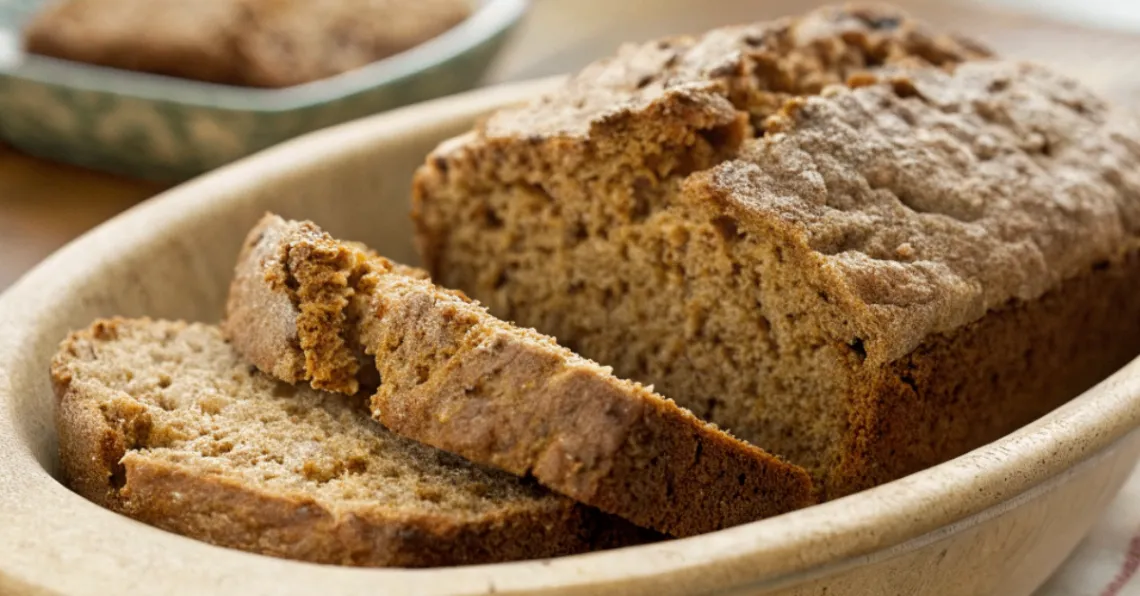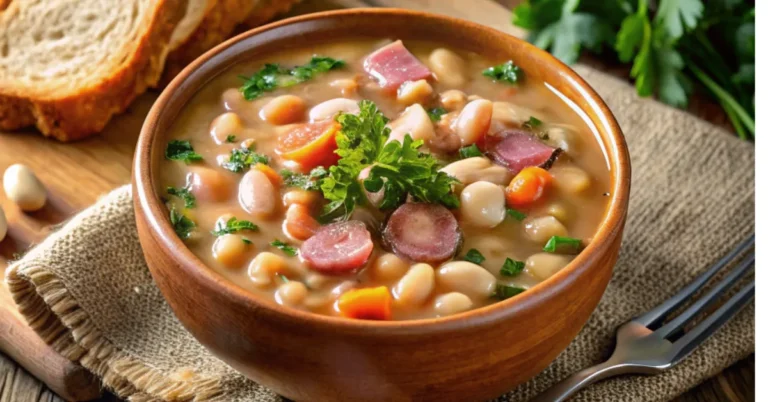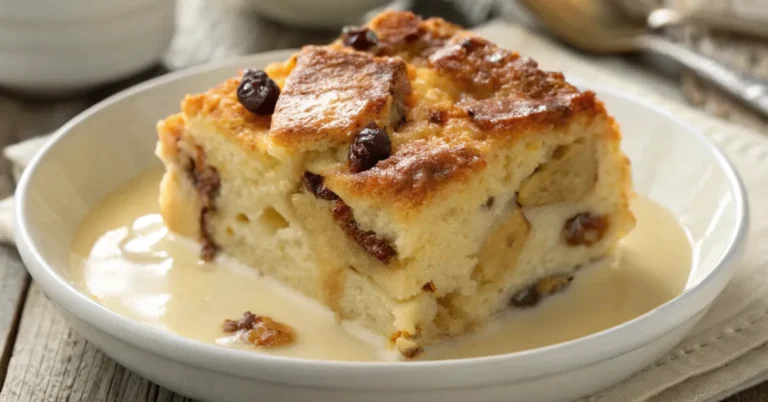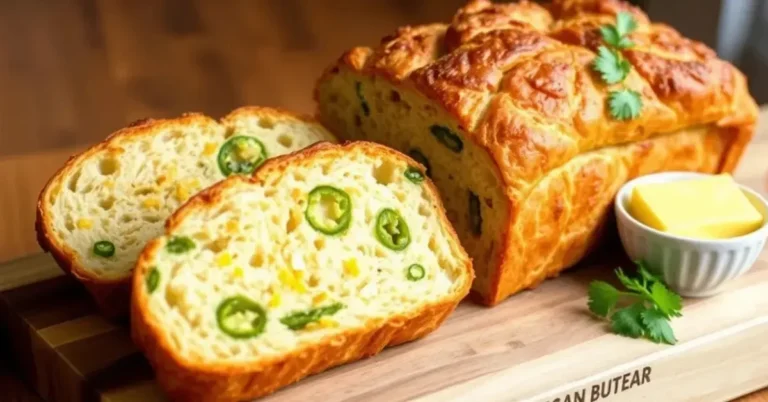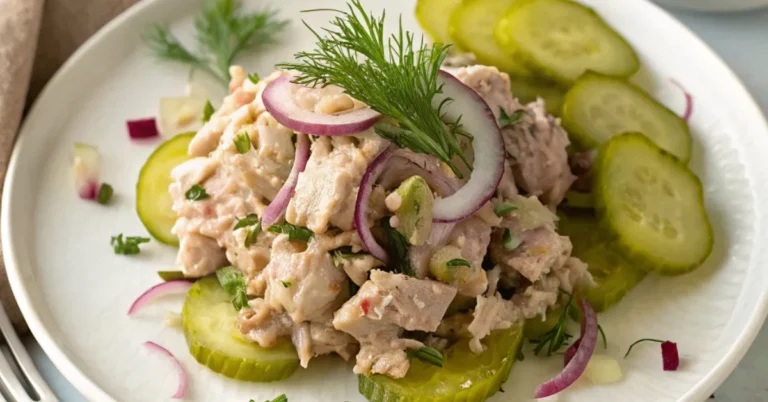How to Make Perfect Irish Brown Bread at Home
Introduction
Irish Brown Bread is a beloved, rustic, and hearty bread that has been a staple in Irish kitchens for centuries. Known for its dense texture and rich, earthy flavor, this bread is a delicious alternative to traditional white bread. If you’re craving a slice of wholesome, home-baked bread, making Irish Brown Bread at home is the perfect way to enjoy a taste of Ireland right in your kitchen.
This recipe is not only simple and quick to make, but it’s also versatile, perfect for pairing with soups, stews, or just a dollop of butter. The secret lies in the combination of wholemeal flour and buttermilk, which give the bread its signature flavor and dense texture. Once you make this Irish Brown Bread, it’s hard not to fall in love with its rustic charm.
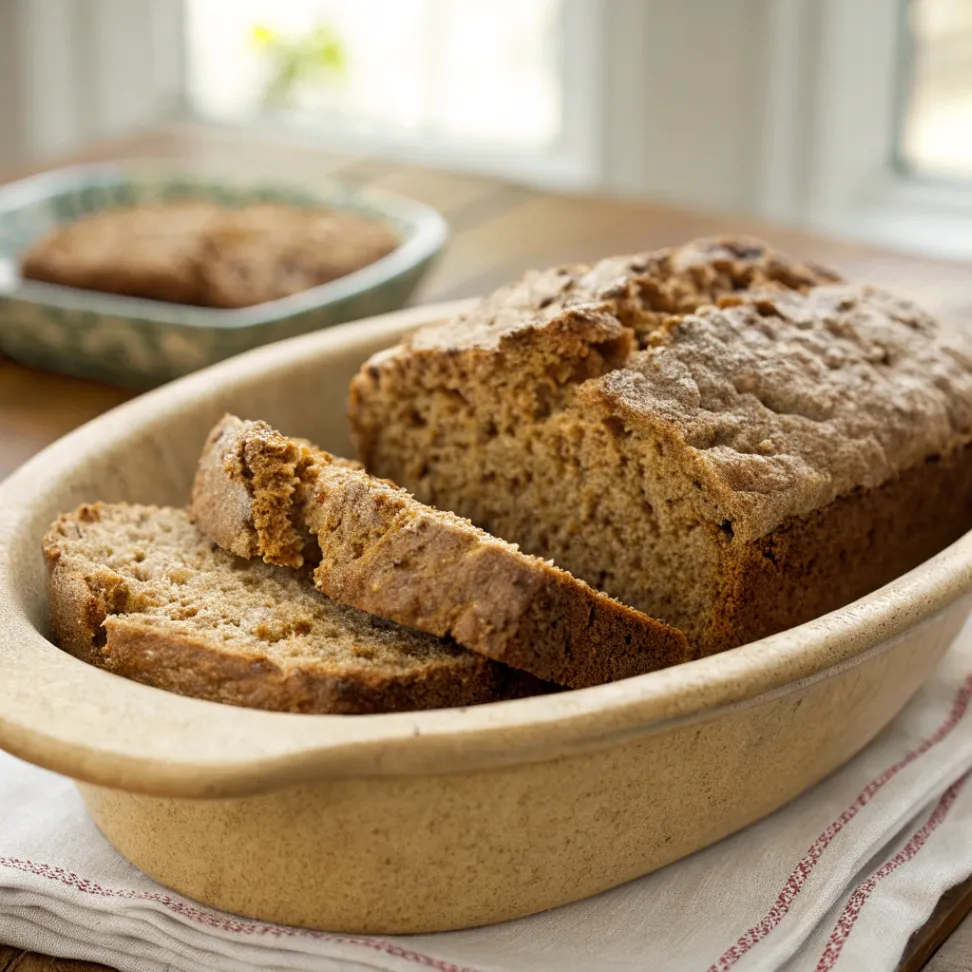
What makes this bread so unique is the combination of wholemeal flour, baking soda, and buttermilk, which allows it to rise without yeast, creating a flavorful, dense loaf. Let’s dive into the recipe and guide you step-by-step on how to make perfect Irish Brown Bread at home!
What Makes This Recipe Unique?
Irish Brown Bread is a no-yeast bread, which means it rises using baking soda instead of the traditional yeast. The bread has a rich, nutty flavor thanks to wholemeal flour, and the addition of buttermilk makes it tender while giving it a slight tang. This makes Irish Brown Bread a delicious and healthier option, packed with fiber and nutrients from the wholemeal flour.
Additionally, this recipe is easy to make with ingredients that are probably already in your pantry. It doesn’t require a stand mixer, kneading, or any complicated techniques—just mix the ingredients together, shape the dough, and bake! Whether you’re a seasoned baker or a beginner, this recipe is sure to impress.
Ingredients
For the best Irish Brown Bread, you’ll need the following ingredients:
- 2 cups of wholemeal flour
- 1 cup of all-purpose flour
- 1 tsp of baking soda
- 1 tsp of salt
- 1 ¼ cups of buttermilk (add more if the dough seems too dry)
- 1 tbsp of honey (optional, for sweetness)
For the best results, it’s important to use fresh ingredients. Wholemeal flour gives the bread its signature dense and nutty texture, while the buttermilk adds both flavor and tenderness. If you can’t find buttermilk, you can easily substitute it with regular milk mixed with a tablespoon of vinegar or lemon juice. The addition of honey is optional but adds a lovely subtle sweetness to balance the bread’s hearty flavors. Ensure that your baking soda is fresh, as it helps the bread rise beautifully without the use of yeast.
Prep Time: 10 minutes
Cook Time: 45 minutes
Total Time: 55 minutes
Servings: 8 slices
Yield: 1 loaf
Key Features
Below are the nutrition facts for one slice (assuming 8 servings):
| Nutrient | Amount per Serving |
|---|---|
| Calories | 130 kcal |
| Protein | 4g |
| Carbohydrates | 28g |
| Fiber | 5g |
| Sugars | 2g |
| Fat | 1g |
| Saturated Fat | 0.5g |
| Sodium | 200mg |
| Potassium | 150mg |
| Calcium | 30mg |
| Iron | 1.5mg |
Directions: Step-by-Step Guide to Making Irish Brown Bread
Follow this simple, step-by-step guide to make Irish Brown Bread at home:
- Preheat Your Oven: Begin by warming up your oven to 425°F (220°C). Place a baking sheet or an oven-safe dish in the oven while it heats, ensuring the bread bakes evenly.
- Mix Dry Ingredients: In a large mixing bowl, combine the wholemeal flour, all-purpose flour, baking soda, and salt. Stir them together until the ingredients are fully incorporated.
- Add Buttermilk: Create a well in the center of your dry ingredients. Slowly pour in the buttermilk and stir gently with a wooden spoon until the dough begins to form. If the dough is too dry, add a bit more buttermilk, one tablespoon at a time. It should be slightly sticky but not overly wet.
- Shape the Dough: Once the dough comes together, transfer it to a lightly floured surface and gently shape it into a round loaf. Be careful not to overwork the dough. Once shaped, place the dough onto your hot baking sheet or dish.
- Score the Dough: Use a sharp knife to score a deep “X” into the top of the loaf. This is traditional in Irish baking and helps the bread cook evenly. It also allows the bread to rise properly during baking.
- Bake the Bread: Place the bread in the oven and bake for 40-45 minutes. The bread should turn golden brown and sound hollow when tapped on the bottom. If you want a crispier crust, leave it in for an extra 5 minutes.
- Cool the Bread: Allow the bread to cool on a wire rack before slicing. This ensures the texture sets and doesn’t crumble when cut.

Pro Tips for a Perfect Irish Brown Bread
- Use Fresh Buttermilk: Buttermilk is key to this recipe, adding both moisture and flavor. If you don’t have buttermilk, you can make your own by adding 1 tablespoon of lemon juice or vinegar to a cup of milk, letting it sit for 5 minutes.
- Don’t Overmix the Dough: Overmixing can make the bread tough. Stir the ingredients just until they come together, and avoid kneading.
- Check the Crust: If you want a softer crust, cover the bread with foil during baking, but for a crunchy, rustic texture, leave it uncovered.
- Serve Warm: Irish Brown Bread is best enjoyed fresh and warm. Pair it with butter, jam, or a hearty soup for the ultimate comfort meal.
Frequently Asked Questions (FAQs)
1. Can I use all wholemeal flour for this recipe?
Yes, you can use all wholemeal flour instead of a mix with all-purpose flour for a denser loaf. However, a combination of both flours gives the best texture and flavor.
2. What if I don’t have buttermilk?
To create a substitute, mix 1 tablespoon of lemon juice or vinegar with 1 cup of regular milk. Allow the mixture to sit for about 5 minutes until it thickens.
3. Can I freeze Irish Brown Bread?
Yes, Irish Brown Bread freezes well. Allow it to cool completely, then wrap it tightly in plastic wrap or foil and freeze for up to 3 months. To enjoy, simply thaw and reheat.
4. How do I store Irish Brown Bread?
Store the bread in an airtight container or wrap it tightly in a tea towel. It will stay fresh for up to 3 days at room temperature. For longer storage, refrigerate it.
5. Why is my Irish Brown Bread dense?
Irish Brown Bread is naturally dense due to the wholemeal flour. If it’s too heavy, try adjusting the amount of buttermilk or ensure you don’t overwork the dough.
You’ll Also Love
If you love baking Irish Brown Bread, you’ll also enjoy these recipes from BeesRecipes.com:
- Irish Soda Bread: Another classic Irish bread that uses baking soda for a light and fluffy loaf.
- Honey Oat Bread: A sweet and hearty bread perfect for breakfast.
- Whole Wheat Focaccia: A savory, Mediterranean-style bread that’s easy to make and full of flavor.
Conclusion
Making Irish Brown Bread at home is not only a satisfying experience but also a way to connect with a rich culinary tradition that has stood the test of time. With its nutty flavor, dense texture, and wholesome ingredients, Irish Brown Bread is perfect for breakfast, lunch, or as an accompaniment to your favorite dishes.
By following this simple, step-by-step recipe, you’ll have a fresh loaf of delicious homemade Irish Brown Bread in no time. Whether you enjoy it with a slather of butter, jam, or alongside a bowl of soup, this bread is sure to become a family favorite.
Give it a try, and experience the comforting taste of homemade Irish Brown Bread! Don’t forget to share your creations with #BeesRecipes on Instagram – we can’t wait to see how you put your spin on this classic recipe!

